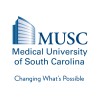
Study of NeuroAid In Enhancing Recovery After Stroke
StrokeCerebral InfarctionTIERS is a phase II to generate detailed preliminary data on the efficacy of NeuroAid in post-stroke recovery, and to assess the utility of the rehabilitation outcome measure instruments used.

Hyperbaric Oxygen Therapy Induced Neuroplasticity in Post Stroke Patients Suffering Chronic Neurological...
Chronic Neurological DeficiencyStrokeThe aim of the current work was to evaluate, for the first time in a prospective randomized study, the effect of HBOT on patients with chronic neurological deficiency due to stroke.

Carotid Artery Revascularization Using the Boston Scientific EPI Filter Wire EZ™ and the EndoTex™...
Transient Ischemic AttackThromboembolic Stroke1 moreThe primary objective of this study is to demonstrate the safety of the NexStent for treatment of carotid artery lesions undergoing stenting with adjunctive use of the FilterWire distal embolic protection device. The rates will be compared to an Objective Performance Criterion (OPC) derived from historic data from high-risk patients undergoing surgical intervention with Carotid endarterectomy. Patients included in this study are those at higher risk for complications associated with CEA.

Ginsenoside-Rd for Acute Ischemic Stroke
Ischemic StrokeThe purpose of this study is to evaluate the efficacy and safety of ginsenoside-Rd for acute ischemic stroke.

Fluoxetine on Motor Rehabilitation After Ischemic Stroke
Ischemic StrokeMotor ImpairmentRecovery from stroke is a major process and, except for acute intravenous thrombolysis, no treatment able to enhance recovery has yet been validated. Some drugs may have a positive effect when combined with physical rehabilitation. Previous studies have shown a potential effect of catecholaminergic drugs on cerebral plasticity of stroke patients. In 2001, our group has demonstrated in a small group of stroke patients (n=8) that a single dose of fluoxetine (Selective Serotonin Reuptake Inhibitor - SSRI) improved motor performance and modulated cerebral plasticity. We conducted a phase IIb prospective, double-blind, randomized, placebo controlled study to assess the effect of a daily treatment with fluoxetin (20 mg) on motor performance in patients with mild to severe motor deficit after ischemic stroke.

Stenting vs. Aggressive Medical Management for Preventing Recurrent Stroke in Intracranial Stenosis...
Ischemic StrokePRIMARY HYPOTHESIS: Compared with intensive medical therapy alone, intracranial angioplasty and stenting combined with intensive medical therapy will decrease the risk of the primary endpoint by 35% over a mean follow-up of two years in high-risk patients patients with 70% - 99% intracranial stenosis who had a transient ischemic attack (TIA) or stroke within 30 days prior to enrollment) with symptomatic stenosis of a major intracranial artery. SUMMARY: The best treatment for prevention of another stroke or TIA in patients with narrowing of one of the arteries in the brain is uncertain. A common treatment is the use of anti-clotting medications to prevent blood clots from forming in the narrowed vessel. There are a variety of medicines used for this purpose. These medications are usually taken for the rest of a patient's life. However, a treatment that has been used successfully together with anti-clotting medications in patients with narrowing of the blood vessels of the heart is now being studied in the blood vessels of the brain. This treatment is called stenting. Recent research has also indicated a benefit in prevention of recurring stroke by Intensive Medical Therapy, which is defined as treating risk factors for stroke like high blood pressure, elevated LDL (low density lipids - the "bad" form of cholesterol) and diabetes. The purpose of this study is to compare the safety and effectiveness of either Intensive Medical Therapy PLUS Stenting or Intensive Medical Therapy ONLY in preventing stroke, heart attacks or death. The study will enroll patients over a 5 year period. Each participant will be involved in the study for a minimum of 1 year and a maximum of 3 years. Fifty different medical centers in the United States are part of this study. Both the Clinical Coordinating Center and the Statistical Coordinating Center for the entire study will be located at Emory University.

COMbination of Clopidogrel and Aspirin for Prevention of Early REcurrence in Acute Atherothrombotic...
StrokePrimary objective: Comparison of efficacy of the combination therapy (clopidogrel plus aspirin) and the aspirin alone (main comparison) to prevent any recurrent ischemic lesion . Secondary objectives: Comparison of Modified Rankin scale (mRS) scores; Comparison of the Incidence of all kinds of stroke and vascular death; Comparison of the Incidence of bleeding episodes (major and minor) and symptomatic intracerebral hemorrhages during the follow-up period.

Efficacy and Safety of Ginsenoside-Rd for Acute Ischemic Stroke
Ischemic StrokeThe purpose of this phase 3 study is to validate the efficacy and safety of ginsenoside-Rd for acute ischemic stroke.

Relative Effects and Predictive Models of Contemporary Upper Limb Training Programs in Stroke Patients...
Cerebrovascular AccidentsThe findings of this study will advance movement reorganization mechanism underlying treatment approaches and clinical intervention techniques. These findings may inform rehabilitation professionals about which treatment approach is superior to another one in certain aspect of outcome and who can benefit most from certain treatment approach. Accordingly, the results of this project may help us move quickly to design and develop efficient and effective rehabilitation programs for individualized patients.

Study of the Combination Therapy of Rt-PA and Eptifibatide to Treat Acute Ischemic Stroke
Ischemic StrokeStroke1 moreThe primary goal of this trial is to determine if individuals with acute ischemic stroke treated with a medium dose of IV rt-PA plus IV eptifibatide started within 3 hours of symptom onset are more likely to have a better outcome than individuals treated with standard IV rt-PA alone.
